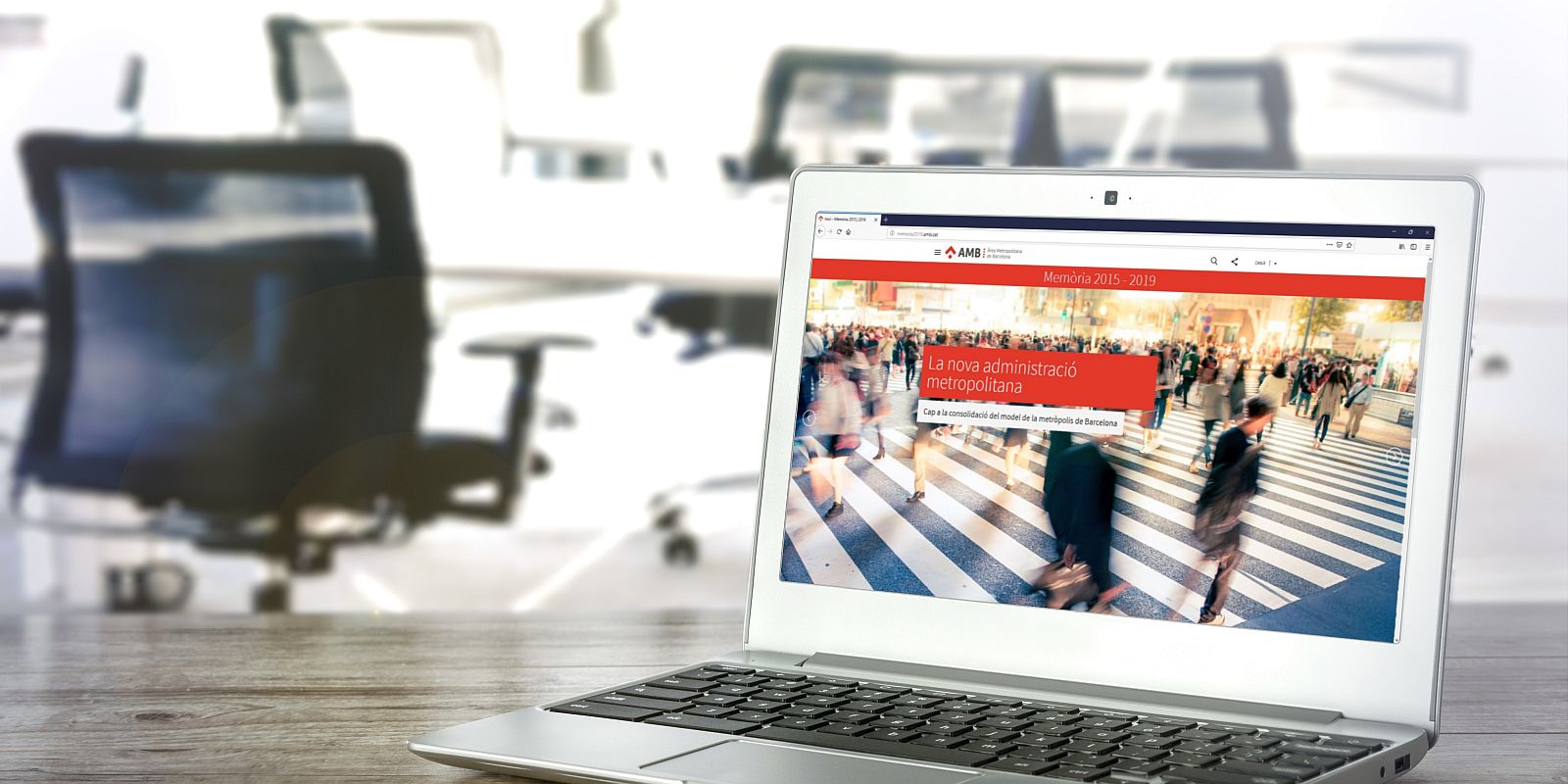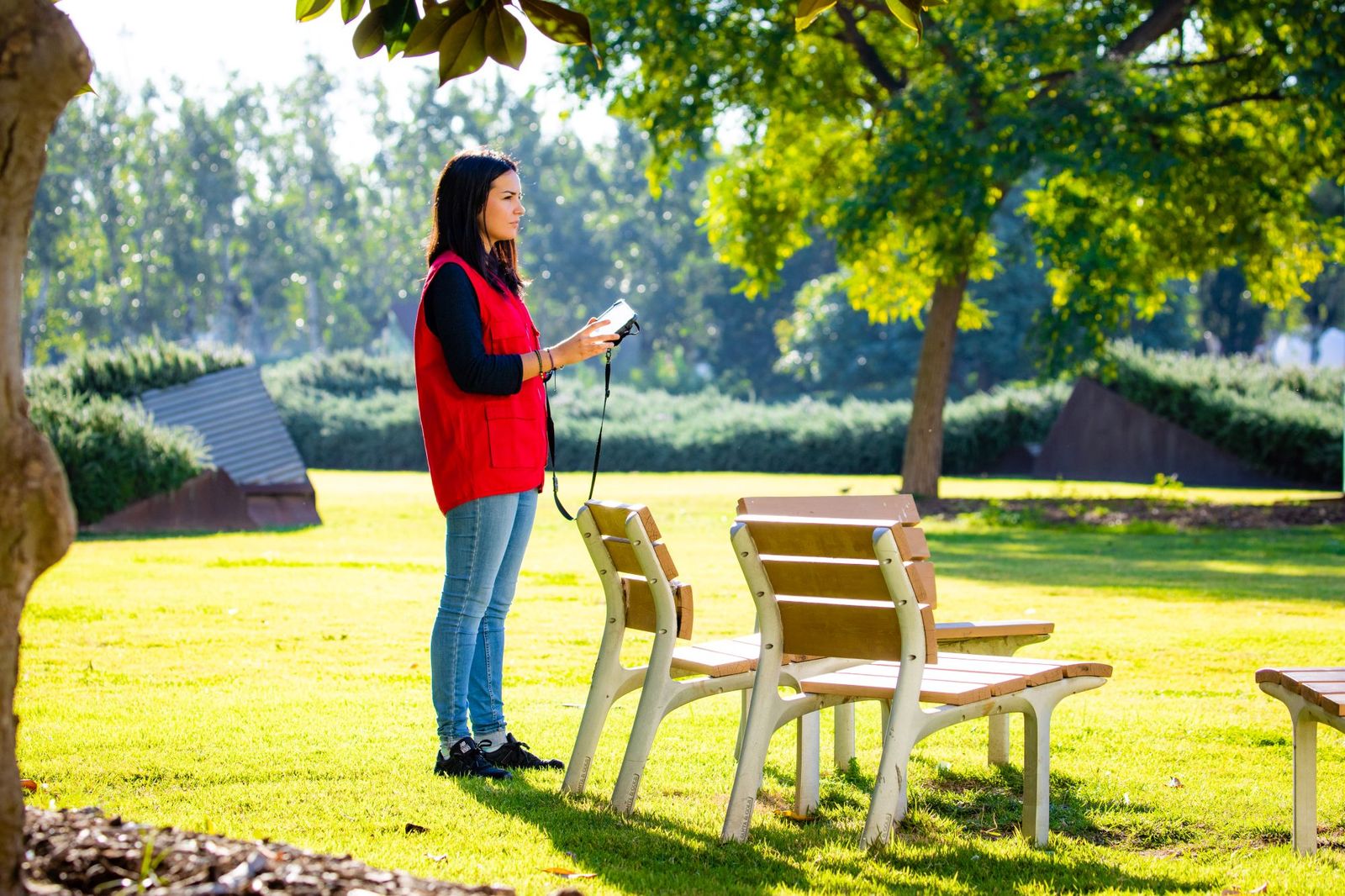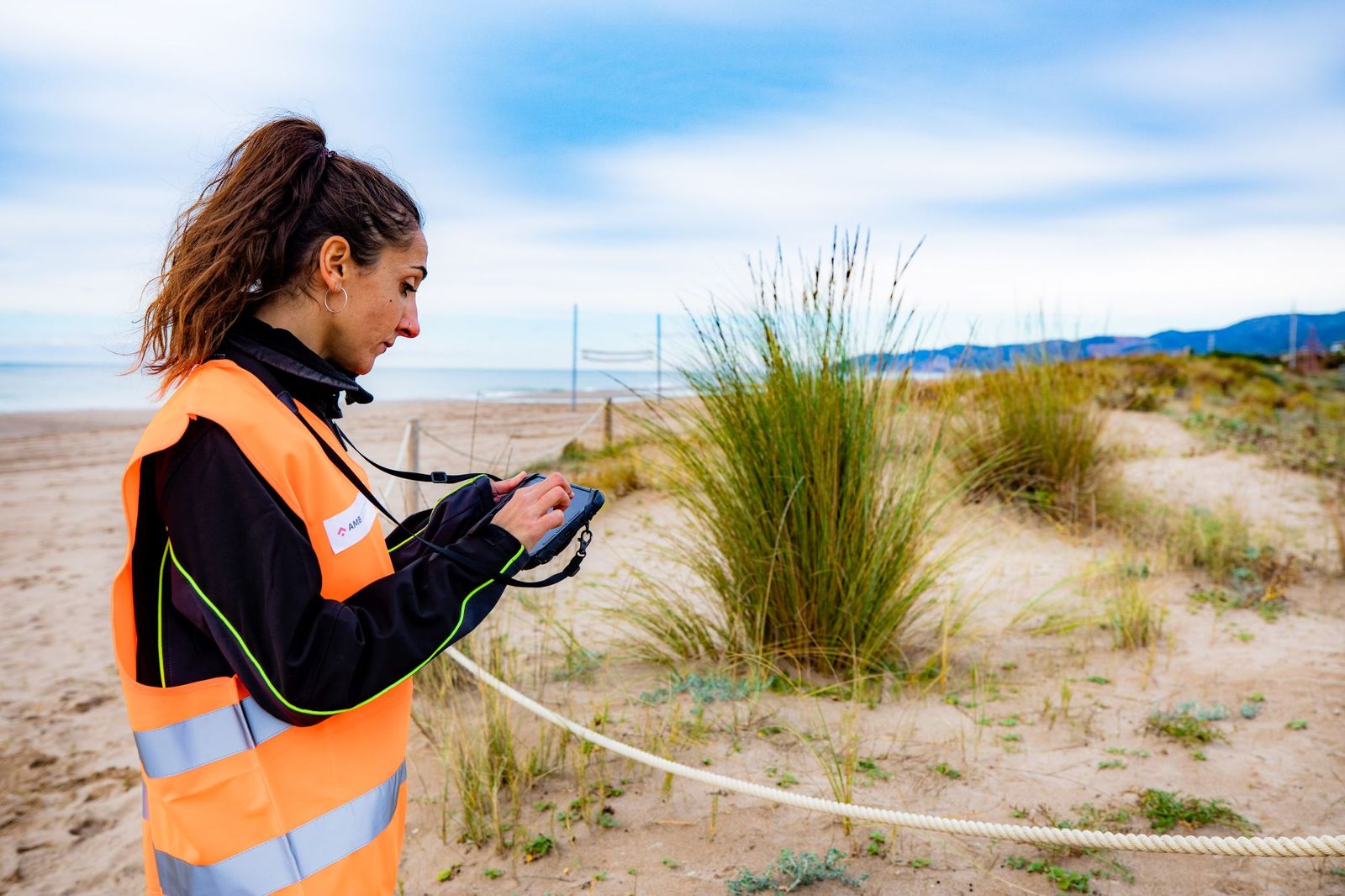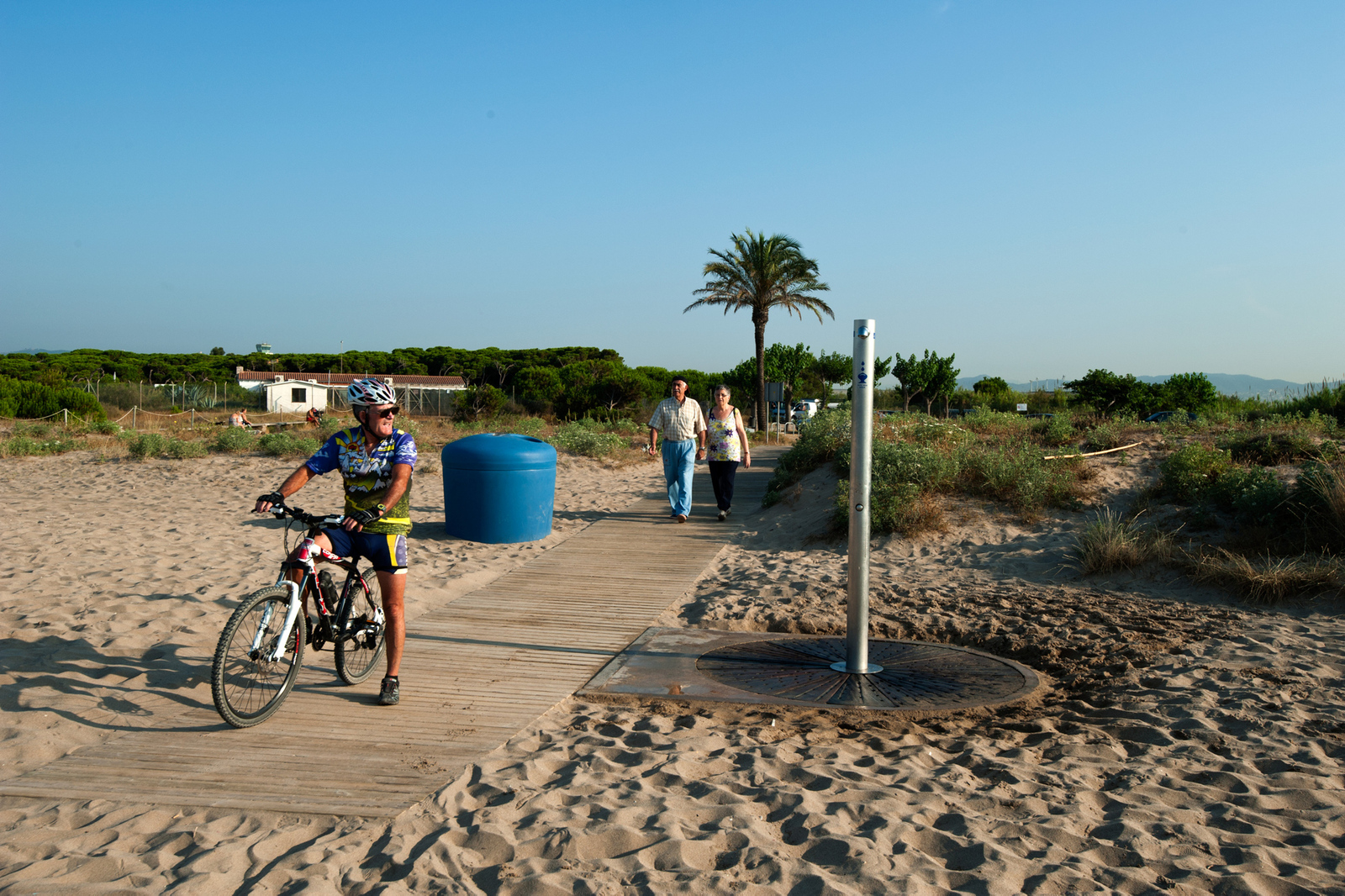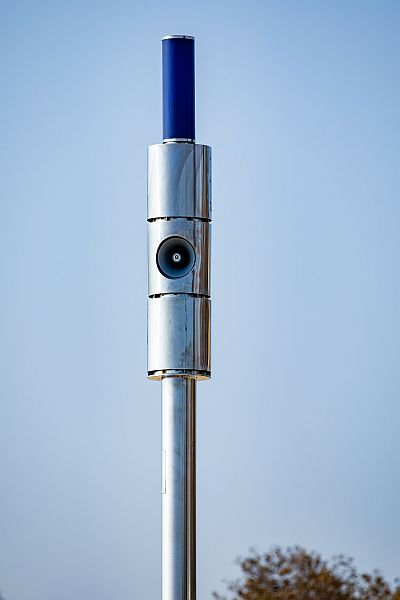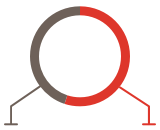The AMB's Innovation Service has worked on two specific avenues of action, which are often interrelated, during the 2015-2019 mandate, namely the Smartcity and the dissemination of the Barcelona Metropolitan Area's actions and services.
In turn, the digital dissemination of the Barcelona Metropolitan Area's actions and services has entailed a major remodelling of the homepage and subpages on the corporate website, and new media have been generated to disseminate it. The adaptive (or responsive) web design has become as a routine in the production of digital products. The period 2015-2019 has also witnessed the consolidation of mobile browsing: more than 52 % of citizens access the web-based products using mobile devices.
-
AMB Smart platform
![IMG]()
The Smart AMB platform, which focuses on integrating information and consolidating and deploying shared smart technology services to be applied in the metropolitan area, has been implemented during this mandate to manage the parks and gardens network and the metropolitan beaches, promote the economic activity areas and manage the Parc Riu Llobregat (Deskpot version):
In 2019, the platform received a major investment from the ERDF totalling €4,297,520.66. Thanks to this European co-financing, more metropolitan services were able to be implemented and are now incorporated into the platform, such as public transport and waste management (mobile version):
New functionalities were also added: tools for citizens to provide their opinions on the spot, a system of online complaints and suggestions, additional municipal information and the interrelation of management data.
Right now, it serves the majority of metropolitan municipalities, and during the month of July 2019, one more will be added, meaning that all the metropolitan municipalities (36) will have the Smart AMBplatform service.
During this mandate, the platform has reported more than 145,000 varied incidents and, for example, it also facilitated the tracking of almost 9,000 actions.
INCIDENTS Parks 92,641 Beaches 55,263 Rivers 290 Waste 539
ACTIONS Parks 8,309 Beaches 367 Rivers 26
![IMG]()
-
Smart infrastructures
In this mandate, the implementation of the Smart AMB platform was not the only action in the sphere of innovation. The AMB's Innovation Service has also implemented other solutions which signal a significant improvement in citizen attention. Standouts include the application of smart sensors to detect possible breakdowns in the showers at beaches and thus avoid wasted water, and the installation of sensors in all the large-capacity semi-buried rubbish bins on the beaches in all the metropolitan municipalities. This new remote management system provides remote information on whether they are full, and using this data, the rubbish collection route can be better planned and more efficient.
![IMG]()
Another prominent action has been adding sensors to streetlights to determine the power needed to light the metropolitan parks, and the remote management of watering (to save water).
Finally, during this mandate, 33 smart posts were installed in order to deliver to beachgoers messages on security and emergencies, the state of the sea, flag changes, incidents, etc., along with around 140 large-capacity rubbish bins with sensors. This new remote management system provides remote information on whether the bins are full, and using this data, the rubbish collection route can be better planned and more efficient. This improvement has gradually been implemented since 2016.![IMG]()
In addition to this optimisation of resources, the sensors also bring many other benefits. They lower the CO2 emissions of rubbish-collection vehicles, reduce the frequency with which they have to go to the beaches by up to 80 % and allow for exclusively night-time collection during beach season with the goal of improving beachgoers' safety and comfort.
The system also includes GPS tracking and immediate warnings in the event of incidents, and it limits waste overflows and provides interesting data, such as collection frequency and citizens' habits.
-
Smart infrastructures
-
Digital dissemination
One of the objectives of the SIAM (information systems for multichannel attention) is to develop products that meet the needs of disseminating and divulging the information generated by the AMB.
With regard to front-end products that are visible to citizens, there are currently ten digital media, so the information adapts effectively according to its kind and the institution's communication needs. The digital media are:
- Corporate website: The main website of the AMB.
- Strategic websites: Their goal is to group together and provide personalised dissemination of the AMB's strategic actions such as the Urban Development Master Plan (PDU) website, the Economic Development Agency website and the "Canvi d'hàbits" (Change Habits) campaign.
- Integrated websites: Pages created outside the Innovation Service which include the styles of the corporate websites and the heading and footer of the AMB, even though they are housed on external servers. These pages may often be integrated into other media such as special or monographic websites.
- Special websites: We want to provide access to more particular information on AMB services. Currently there are five special pages, namely the website of the Parc Riu Llobregat, the website of the ring roads, the teaching guide for the environmental education programme called "Compartim un Futur" (We Share a Future), the website on the new metropolitan parking service and the Annual Report on the mandate. Before the mandate is over, there are plans to publish three more special websites: the "Millor que Nou" (Better than New) Programme on waste prevention; the LitoMet website; a repository of tools and resources on the metropolitan coastline; and the metropolitan special data platform, IDEAMB, where geolocalised information on the AMB can be checked.
- Special webpages: Their design adapted to geolocated contents or specific search platforms (company services, circular economy, energy projects, biodiversity, etc.).
- Monographic: This medium is particularly designed for mobile phones, running browser in foreground, and services to respond to very localised or small-format actions such as major events like the Post-Hàbitat III or working systems like the BIM. Thus, a monographic website is comparable to a digital brochure. They can also serve as landing pages which enable the AMB's own digital products to be promoted, such as the AMB Metropolitan Parking app for mobile phones or the business information found in Barcelona Opportunity.
- Mobile apps: Four native apps were created for Android and iOS, and this year the first web app is being created.
- Newsletters: Fourteen newsletters on different topics and three push notification services (phytosanitary warnings, air pollution warnings and taxi warnings), which entail a volume of almost 30,000 subscribers and more than 400 mailings, an average of 15 % of which are opened.
- Corporate blogs: Seven thematic blogs with plans to add another one by the end of the 2015-2019 mandate. This format allows the information generated by the different metropolitan areas to be handled in a more personalised and flexible way.
- Social media: A total of 29 social media, with a strong presence on Twitter and Instagram accounts.
Repository of digital tools-
Portals, webs, aplicacions, eines digitals i integracions
-
![IMG]()
8 web portals
AMB, Taxi, Transparency, Report 2011-2015, Participatory process, Report 2015-2019, Consorci Metropolità de l'Habitatge, LIFE Methamorphosis
-
![IMG]()
5 integrated websites
Metropolis Barcelona website (*), Economic Development Agency website (*), Change of habits website, Air quality viewer, Fauna viewer (*), strategic web support
-
![IMG]()
9 special websites
Housing website, Parc Riu Llobregat, Educational guide, Ring roads, Millor que nou, LitoMet, Parking lot, IDEAMB Platform and Report 2019
-
![IMG]()
16 special plans and digital tools
EV charging stations website, Environmental situation, Contractor profile, Economic Observatory, Services for companies, Institutional image, Organigram, NUMAMB, CCAE, Calcula la teva ruta, Taxi stops, Mobility chatbot, Mobility service alerts, Styles guide, TV IMET
-
![IMG]()
8 blogs
AMB Metropolis Barcelona, Bicycle blog, Education for Susteinability, "Millor que Nou" blog, InnoAMB Platform, We have Rights, We weave Freedoms, Climate | Energy, Economic Agency
-
![IMG]()
5 transversal tools
opendata, forms, newsletters, participatory process
-
![IMG]()
4 components
Dynamic graphic, dynamic map, dynamic timeline and social media reader
-
![IMG]()
4 apps and 1 webapp
InfoParcs, InfoPlatges, Calcula la teva ruta, Taxi al dia | Estat de l'aire (webapp)
-
![IMG]()
10 integrations with outside systems
DGT, Proactiva, Gencat, Bicibox, AMB Cartographic Server (GIS), AMB Information Services, Twitter, Facebook, Instagram and YouTube
-
![IMG]()
2 web services published
Guàrdia Urbana, PGR
-
![IMG]()
3 general searchers
integrated with Google Custom Search
-
![IMG]()
43 thematic search engines
Agenda, News, Press releases, Publications, Opendata catalogue...
-
![IMG]()
3 electronic processing tools
With ID system and VÀLid signature: AMB applications presentation (generic application and recruitment application), IMET register and cancellation management of taxi driver licenses and Right of access Transparency form
-
![IMG]()
1 extranet
Aptitude reports and records management of the Consorci Metropolità de l'Habitatge (CMH) (Housing Metropolitan Consortium)
-
-
Web analytics
-
![IMG]()
% traffic
13 % servers (AMB) 87 % external (outside the AMB)
-
![IMG]()
Kind of traffic
45 % search engines, 21 % web links, 32 % direct, 2 % social media and others
-
![IMG]()
Entry devices
44 % computer, 52 % mobile phones and 4 % tablets
-
![IMG]()
299,699
visits/month
-
![IMG]()
153,786
unique users/month
-
![IMG]()
2,380,000
open data consultations/month
-
![IMG]()
785,698
pages visited/month
-
![IMG]()
2.62
pages/visit
-
![IMG]()
2' 39"
visit length
-
![IMG]()
51.47 %
bounce rate
-
-
Volume of contents
-
![IMG]()
15,691
web contents published
-
![IMG]()
1,731
pages and articles published
-
![IMG]()
2,948
news items and press releases
-
![IMG]()
27,240
images uploaded on the manager
-
![IMG]()
12,812
documents uploaded on the document manager
-
![IMG]()
3,436
activities published
-
![IMG]()
1,130
publications and studies
-
![IMG]()
941
services by company and service providers
-
![IMG]()
504
tenders on the contractor profile
-
![IMG]()
345
blog entries
-
![IMG]()
405
points of interest
-
![IMG]()
76
files being processed (electronic office)
-
![IMG]()
92
parks and beaches
-
![IMG]()
96
public job offers
-
![IMG]()
86
users: 69 internal, 17 external (with session initiated in the past year)
-
-
Direct services
-
![IMG]()
8,593
announcements of supply/demand and buying and selling advertising on the Taxi portal (since 2014)
-
![IMG]()
547
users of the application service
-
![IMG]()
704
AMB applications submitted remotely (since 2018)
-
![IMG]()
16,346
registrations on forms (since 2014)
-
![IMG]()
7.482
registrations (since 2014)
-
![IMG]()
426
newsletters and notifications by email (since 2014)
-
![IMG]()
29,492
subscribers to newsletters and notifications
-
![IMG]()
1,052
push notifications sent to the Taxialdia app (since 2017)
-
![IMG]()
16,803
IMET online proceedings (since 2016)
-
![IMG]()
2,831
CMH rehabilitation files
-
![IMG]()
2,085
CMH suitability reports
-
![IMG]()
57
CMH extranet users
-
